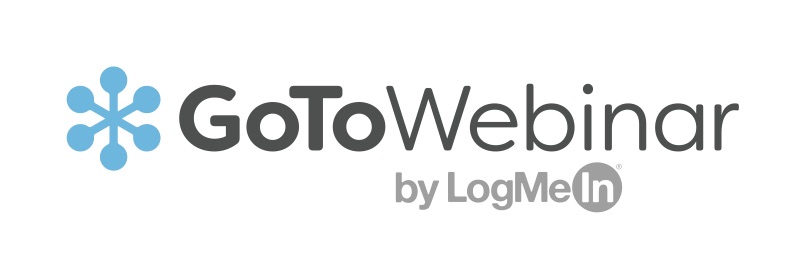You might have heard of "content shock" or "the marketing rebellion," and experts everywhere are urging us to "humanize our brands." As every brand works to differentiate itself in the neverending deluge of brand content, many companies turn to storytelling as a way to stand out to their audiences and make a lasting impression.
Enter Joe Lazauskas, head of marketing at Contently and author of The Storytelling Edge: How to Transform Your Business, Stop Screaming Into the Void, and Make People Love You. I invited Joe to Marketing Smarts to talk about the new neuroscience of storytelling, how stories impact our brains, and where storytelling fits into content strategy throughout the customer journey. Along the way, we also address digital transformation, marketing technology, and the renewed emphasis on customer experience (CX).
Here are a few highlights from our conversation:
Neuromarketing has its roots in propaganda research (03:35): "Ten years ago, we didn't know a ton about how stories impact the brain, but there's been a lot of research over the last decade that have revealed some really fascinating stuff for [marketers]. The big reason that there's been such a revolution is because the Department of Defense...started funding a lot of neuroscience research that would help them figure out what sort of propaganda worked best, both to help them combat propaganda from the Taliban as well as help them get civilians in conflict zones on their side.
"But as a result, there's been a lot of commercial applications being designed by the neuro-researchers who got funding from [the Department of Defense]. And a lot of these applications involve neuromarketing—the use of neuroscience to understand what sort of stories, what sort of ads, content, experiences, truly engage us. Because, traditionally, we're really unreliable as human beings in terms of reporting what we like, what we respond to the best.
"We've done basically the same thing in terms of focus groups for television, for advertising, for movies, for 50 years in terms of rating how engaged we are with content subjectively, and it usually doesn't correlate to how engaged we truly are on a physiological level. And it doesn't do a good job of predicting how much someone will like an ad or a TV show or a movie. So what all this new neuromarketing technology does is allow us to see how engaged people truly are."
To engage your audience, tell stories: People's brains are wired to respond to narratives (05:18): "Really good stories have two huge impacts on the brain. The first is that stories trigger the [production] of oxytocin, which is a neurochemical that's proven to cause us to feel a deeper sense of connection with people or things related to a story, as well as make us more likely to, say, give to a charity when a test subject snorts oxytocin. It's called 'the love drug' for that reason. It shows up at really high levels when a mother is with her child or we're with our spouses or our best friends. But it also shows up when we are really engaged in a good story.
"The second thing that stories have been shown to do is greatly increase the amount of neural activity in our brains. So our brain runs on a series of electric pulses. And when we are engaging with a good story, the neural activity in our brains increases fivefold. It's like someone has flipped on the switchboard for the city of our mind. Neuroscientists have this saying: 'Neurons that fire together wire together.' So when you have a lot more neural activity in your brain, you're a lot more likely to remember the thing that you're absorbing at that moment, which is why we remember a lot more lessons and a lot more information when they're told to us through a story rather than a fact sheet or a memo or simple statistics."
Incorporate storytelling into all kinds of content, including product videos and sales decks (17:30): "Stories have a real place in your sales pitch and your product video. I've been working...on mapping a great sales pitch to a great story arc. You don't want to just be hitting people with stray information. You want to be telling a story about where you are in your industry, the challenges that your customer is facing. You want to give them a glimpse of what the promised land looks like and then take them through the journey that will get them there.
"If that's product videos, if that's sales pitches, all of that content needs to tell a story in some way. Right now we're redoing our website and we're going through all the section pages. We're constantly thinking about the story that we're telling on each and every page. Is there a coherent narrative that people can go through that gives them a sense at the end of an understanding of who we are and why we designed our offering the way that we have?
Storytelling isn't just for "top of the funnel" content: Use it all the way through the customer journey, including post-purchase (18:32): "This is, to me, one of the biggest opportunities in content marketing right now, to not just view storytelling as a top of funnel activity but, rather, something that is in every part of the customer experience. You're constantly teaching and educating people through stories, whether it's in a case study or in a product video or in a sales pitch, or in the nurture stream when someone comes on board and becomes a customer. What sort of content are you serving them there?
"That's where the real ROI is. That's where it actually becomes easier to track the ROI and the dollar impact you're having because, as the result of telling some really great stories in that area, you can, say, boost the opt-to-win rate of your sales team from 10% to 15%, when then you've just created a 50% ROI lift on your content...which, across your entire company and your sales funnel, is probably a huge amount of money. It's really, really powerful."
To learn more, visit Contently.com. You can also follow John on Twitter at @joelazauskas. And get your copy of Joe's book, The Storytelling Edge, at TheStorytellingEdge.com.
Joe and I talked about much more, including digital transformation and the resurgence of customer experience, so listen to the entire show, which you can do above, or download the mp3 and listen at your convenience. Of course, you can also subscribe to the Marketing Smarts podcast in iTunes or via RSS and never miss an episode!
This episode brought to you by GoTo Webinar. Visit mprofs.com/webinarkit to get your free kit loaded with guides and templates that will help you take your webinars to the next level!
GoToWebinar makes it easy to produce engaging online events. Whether you want to connect with your prospects, customers or employees, GoToWebinar has the tools and analytics you need. Start creating interactive and educational webinars your audience will love.
Music credit: Noam Weinstein.





